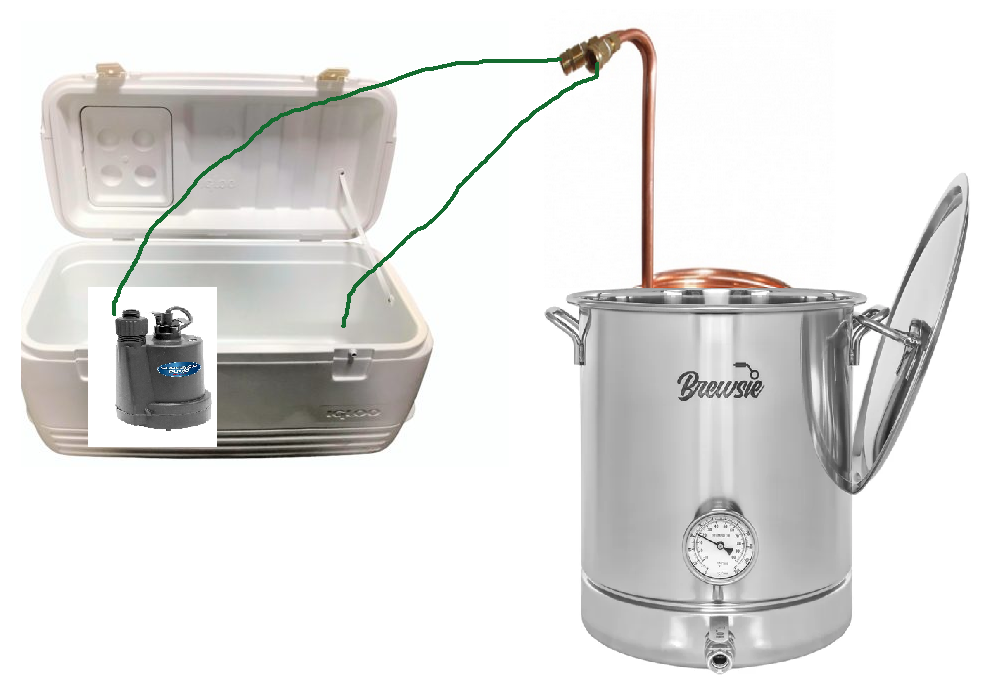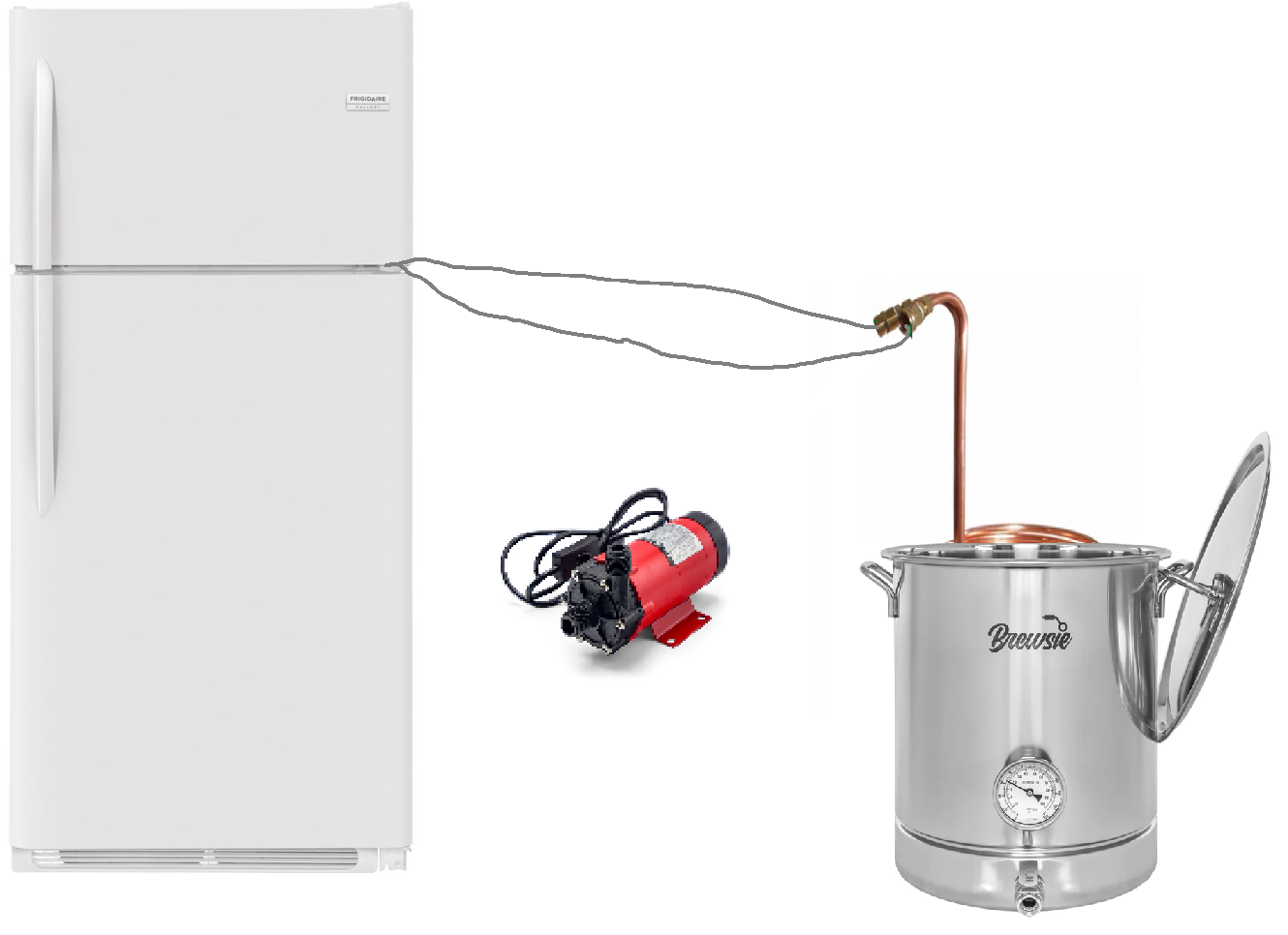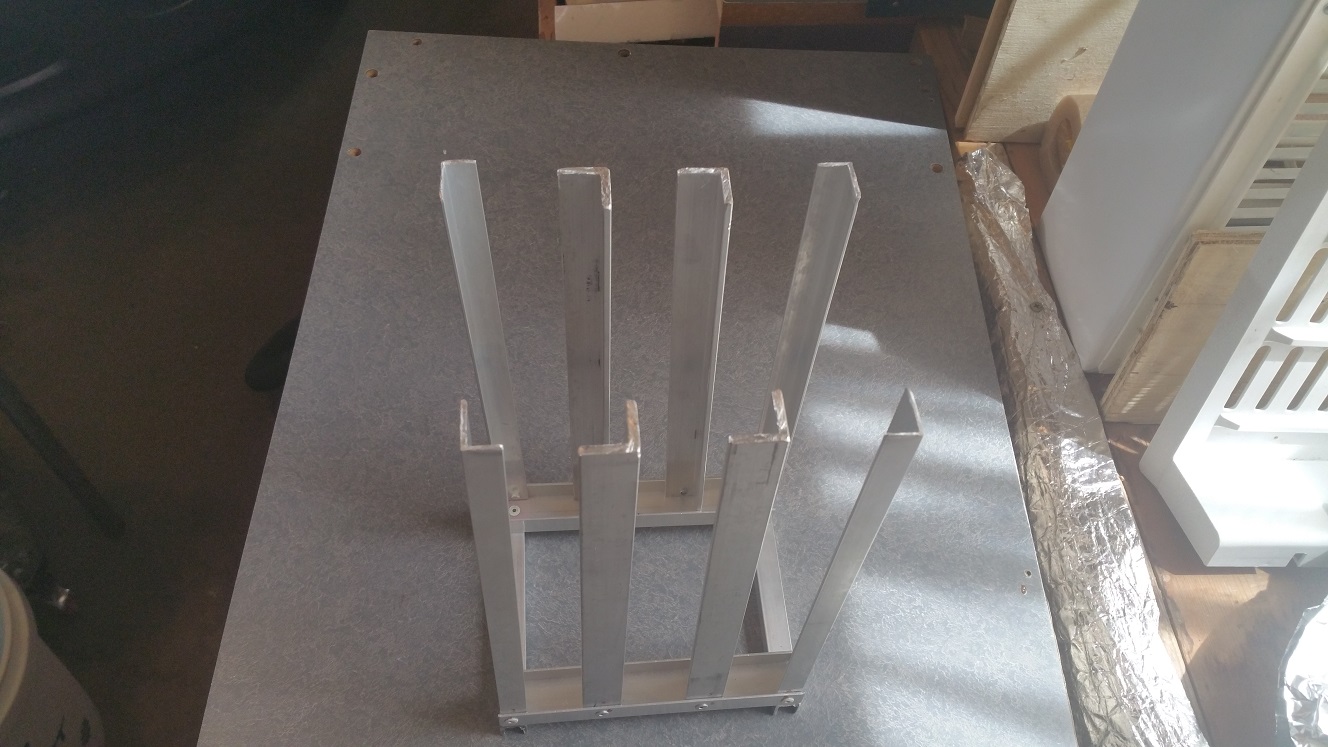It all depends on how warm the ambient temp is, how well you can insulate the conical from that warmth, the throughput of the chilling solution, the volume of the beer, and the volume and temp of the chilling solution.
The conical has a lot of protuberances sticking out of it--handles, ports, legs, the lid and its stuff, the dump valve....all of them are heat sinks drawing warmth from ambient into the fermenter. The chilling unit has to fight that, and maintain temps at your desired level.
Without knowing ambient temps, I can't give much of an educated guess on this, but let's assume it's 70 degrees. Since your water temp is 53, you can probably get the wort temp to 65, maybe a touch lower. I think you'd probably be able to lower the wort in the fermenter to 50, especially if you put a few pounds of ice in the water (assuming no glycol, but if it's in the refrigerator, you're not going to be able to get it that cold anyway).
Can it maintain 50? Maybe. The nice thing about this is you can try it and see, and if not, then pursue other avenues.
Here are a few ideas to try; one is to wrap the conical in a moving blanket (or similar) to isolate it from ambient, essentially insulating it.
View attachment 660354
Another idea I tried (this when trying to crash the beer to 32) was to build an enclosure to isolate the unit from ambient. Long story short, I used a window air conditioner to blow cold air inside (the holes in the pegboard sides allowed an exit for the air). I was certain that was going to work, but it didn't; what I figured out was that I was blowing 55 degree air on the conical, which was a continuous WARMING of the unit higher than anything less than 55. So once the unit got down to about 40, the warmth of the 55 degree air blowing on it warmed it up.
View attachment 660355
The last thing I tried was insulating the heck out of the unit using reflectix; it helped somewhat but didn't make enough of a difference.
View attachment 660357
So, in your case, what I'd try is this: set up the container in the fridge, and keep making ice in the freezer portion (assuming you have one). See how it does for you, and if you need to supplement the cooling with ice, do that for the first time. Low cost, but it should also work. Then re-revaluate.
I'd also wrap the unit in something to help insulate it and isolate it from ambient; that should help as well.
*****
I have one more thing to try when I find a way to cut 2" thick foamboard insulation squarely; I'd make an enclosure out of it to enclose the unit. I'm pretty convinced it would work, but I need to cut 2 x 4-foot sections and hold them together with bungee cords or similar.
One more thing: my kludged together system above (with the heat sink and such) WAS enough to maintain fermentation temps, and it was able to crash it down to below 40. As
@The_Bishop notes above, these refrigerators aren't designed for this, BUT in my case it did work, and the end result was a glycol chiller for a total cost of....maybe $30, plus refrigerator. On that one I cut holes through the top of the freezer to run the lines; a few pics below showing that. So it can be done, and done one heck of a lot cheaper than paying $800+ for a penguin or similar unit.
View attachment 660358 View attachment 660359 View attachment 660360 View attachment 660361 View attachment 660362 View attachment 660363

































![Craft A Brew - Safale BE-256 Yeast - Fermentis - Belgian Ale Dry Yeast - For Belgian & Strong Ales - Ingredients for Home Brewing - Beer Making Supplies - [3 Pack]](https://m.media-amazon.com/images/I/51bcKEwQmWL._SL500_.jpg)







































